Item Selling

How can I make money by selling my used goods ?
Selling used goods is a great way to declutter your home and make some extra cash. Here are the steps you can follow to successfully sell your used items: 1. Determine what to sell by going through your belongings and deciding which ones you no longer need or use. You can sell anything from clothes and electronics to furniture and books. 2. Research the market value of your items by checking online marketplaces like eBay, Craigslist, or Facebook Marketplace to see how much similar items are selling for. This will help you price your items competitively. 3. Clean and repair your items before listing them for sale. Make sure they are in good condition and free of any damages or flaws that could affect their value. 4. Take high-quality photos of your items using natural lighting and a neutral background. Include multiple angles and close-ups of any unique features or details. 5. Write a compelling description that is honest about the item's condition and provides as much detail as possible, including brand, size, color, and any relevant history or stories associated with the item. 6. Choose a selling platform that best suits your needs and target audience, such as eBay, Craigslist, or Facebook Marketplace. 7. Price your items appropriately by considering their condition, age, and demand. Be open to negotiation and be willing to adjust your price if necessary. 8. Promote your listings on social media platforms like Facebook, Twitter, and Instagram to reach a wider audience. Join local buy-and-sell groups on these platforms to connect with potential buyers in your area. 9. Be responsive to buyers when they express interest in your item. Answer any questions they may have and provide additional information if needed. Building trust with potential buyers will increase the likelihood of completing a successful transaction. 10. Arrange for pickup or delivery (if applicable) with the buyer. Make sure to communicate clearly about timing and location details to ensure a smooth transaction process.

How do I ensure safe transactions when buying or selling second-hand goods online ?
When engaging in online transactions for second-hand goods, it is crucial to take precautions to ensure the safety and security of both parties involved. Here are some tips on how to do so: Research the Seller/Buyer: Check reviews and ratings, verify identity, and be cautious about sharing personal information. Use Secure Payment Methods: Avoid cash transactions, protect financial information, and opt for secure payment methods such as PayPal or credit cards. Meet in Public Places: Arrange for public meetings and bring a friend along for extra security. Inspect the Item Before Purchasing: Thoroughly inspect the item, ask questions, and ensure it matches the description provided by the seller. Keep Records of the Transaction: Save conversation history and request receipts or invoices to document the transaction.

How can I determine the value of a second-hand item before purchasing it ?
When considering purchasing a second-hand item, itWhen considering purchasing a second-hand item, it its value to ensure you' it's important to determine its value to ensure you're getting a fair deal. Here are some steps to help you assess the value of a pre-owned item: 1. Research the market price by checking online marketplaces, consulting auction houses, and reading reviews and forums. 2. Evaluate the condition of the item by inspecting for damage, considering age and obsolescence, and testing functionality. 3. Negotiate with the seller by making an offer based on your research and evaluation, being prepared to walk away if necessary, and asking for more information if needed.

How do I know if a luxury item is worth the price tag ?
When it comes to purchasing a luxury item, it is important to consider several factors before making a decision. Here are some tips on how to determine if a luxury item is worth the price tag: ## 1\. Research the brand and product - **Brand reputation**: Look into the brand's history, heritage, and reputation for quality craftsmanship. - **Product quality**: Examine the materials used, construction, and overall design of the item. - **Comparison shopping**: Compare similar items from other luxury brands to see if the price is justified. ## 2\. Consider your personal needs and preferences - **Functionality**: Will the item serve a practical purpose in your life, or is it purely for aesthetic purposes? - **Personal style**: Does the item align with your personal style and taste? - **Usage frequency**: Will you use the item frequently enough to justify the cost? ## 3\. Evaluate resale value - **Popularity**: Is the item popular among collectors or enthusiasts? - **Condition**: Is the item well-maintained and in good condition? - **Market demand**: Is there a high demand for this type of luxury item? ## 4\. Seek professional advice - **Expert opinions**: Consult with experts in the field, such as luxury goods appraisers or collectors. - **Online forums**: Join online communities dedicated to luxury goods and seek advice from fellow enthusiasts. - **Sales associates**: Ask sales associates at luxury stores for their recommendations and insights. ## 5\. Trust your instincts - **Emotional connection**: Do you feel a strong emotional connection to the item? - **Guilt-free spending**: Can you afford the purchase without feeling guilty or stressed about the cost? - **Long-term satisfaction**: Will owning this item bring you long-term satisfaction and happiness? In conclusion, determining whether a luxury item is worth the price tag requires careful consideration of various factors, including brand reputation, product quality, personal needs and preferences, resale value, professional advice, and trusting your instincts. By taking these factors into account, you can make an informed decision about whether a luxury item is truly worth its price tag.

What are some popular online marketplaces for buying and selling second-hand items ?
Popular Online Marketplaces for Buying and Selling Second-hand Items Several online marketplaces allow people to buy and sell second-hand items, providing a convenient way to declutter homes, find unique items, and save money. Some of the most popular options include: 1. eBay - a large and well-known platform with buyer protection policies, shipping options, and payment methods. However, it charges listing fees and takes a percentage of each sale. 2. Craigslist - a free classified ads website for various categories, including second-hand items. It allows local transactions, reducing shipping costs and time delays, but lacks buyer protection policies and limited user verification. 3. Facebook Marketplace - a feature within the Facebook app that connects buyers and sellers within their community. It is easy to access and use, but also lacks official buyer protection policies and limited user verification. 4. OfferUp - a mobile app for buying and selling second-hand items locally within a community. It offers a user-friendly interface, in-app messaging, and ratings systems to help ensure secure transactions. However, it may not have as large of a user base compared to other platforms. 5. Poshmark - an online marketplace specifically designed for buying and selling fashion items, including clothing, accessories, and footwear. It offers a dedicated platform for fashion enthusiasts and features such as virtual styling sessions and social media integration. However, it focuses solely on fashion items, limiting its appeal to those looking for other types of second-hand goods. 6. Depop - a social shopping app for buying and selling unique fashion items, including clothing, accessories, and footwear. It offers a visually appealing platform with a strong emphasis on individuality and creativity, direct messaging, and ratings systems. However, it also focuses solely on fashion items and has had some reported issues with customer service and shipping delays.

How can I effectively describe my second-hand items to attract buyers ?
When selling second-hand items, it's important to provide a clear and compelling description that captures potential buyers' attention. Here are some tips on how to effectively describe your items: 1. Keep the title short and sweet, using keywords related to the item and mentioning the brand and model if applicable. 2. Provide a brief overview of the item's condition and features, and mention any standout qualities or unique aspects. 3. Clearly state the condition of the item, using descriptive words like "like new," "gently used," or "well-loved." If there are any flaws or damages, mention them explicitly. 4. Highlight the main features and benefits of the item, using bullet points for easy reading and emphasizing any additional accessories or bonus items included. 5. Include multiple high-quality photos showing different angles and details, making sure they are well-lit and focused. Consider adding a photo of the item in use or with a size reference. 6. Set a fair price by researching similar items to determine a competitive price point, and consider offering a negotiation range or stating "firm" if you're not willing to budge. 7. Mention where you are located and whether local pickup is available, and if you offer shipping, specify the cost and estimated delivery time. 8. Provide a way for interested buyers to contact you, such as an email address or phone number, and consider adding a link to your profile or website for more information about other items you may have listed. By following these guidelines, you can create an effective description that will help attract potential buyers and increase your chances of successfully selling your second-hand items.

How can I find reliable sources for buying and selling used goods ?
To find reliable sources for buying and selling used goods, it's essential to conduct thorough research, choose trusted online marketplaces, verify seller information, ask for detailed descriptions and photos, use payment methods that offer protection, be wary of scams, consider professional resellers, and inspect items before purchasing. By following these steps, buyers can minimize risks associated with such transactions and ensure they get the best value for their money.

How do I buy and sell cryptocurrency ?
This guide provides a step-by-step process for buying and selling cryptocurrency, including choosing a reliable exchange platform, creating an account, funding the account, buying and selling cryptocurrency, and withdrawing funds. It also emphasizes the importance of research and caution in this potentially lucrative investment opportunity.

How do I sell my old iPhone safely and get a good price ?
Selling your old iPhone can be a great way to make some extra cash, but it's important to do it safely and get the best price possible. Here are some tips on how to sell your old iPhone safely and get a good price: 1. Determine the value of your iPhone using websites like eBay or Craigslist. 2. Clean up your iPhone and remove any scratches or dents that could affect its value. Consider getting a new case or screen protector. 3. Backup all your data using iCloud or iTunes before selling your iPhone. 4. Remove all your personal information from your iPhone, including deleting your Apple ID and iCloud account. 5. Choose a safe selling method like online marketplaces, trade-in programs, or local classifieds. Avoid meeting strangers in person and use trusted payment methods. 6. Set a fair and competitive price for your old iPhone based on similar models on the market. 7. Provide accurate information about your iPhone's condition, features, and any issues it may have when listing it for sale. 8. Be responsive and prompt in your communication with potential buyers, answering any questions they may have and providing additional information if needed.
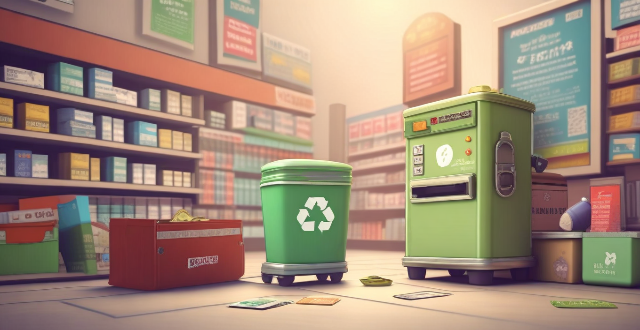
Can I get money for recycling my old iPhone ?
You can get money for recycling your old iPhone by selling it online, trading it in at a store, or recycling it through Apple's program. Selling online allows you to set your price and reach a large audience, but may take time and require dealing with shipping and payment issues. Trading in at a store is convenient and doesn't require finding a buyer, but the trade-in value may be lower than selling it yourself. Recycling through Apple's program is environmentally friendly and gives you a gift card, but the value may be lower than other options and requires packaging and shipping your iPhone. Choose the option that works best for you based on your needs and preferences.

How can I verify the authenticity of a second-hand luxury item ?
This guide provides a comprehensive approach to verifying the authenticity of second-hand luxury items, emphasizing research on the seller's reputation, physical inspection, checking for authenticity marks, requesting proof of authenticity, and utilizing online verification tools. It also suggests additional tips such as understanding common fake indicators and consulting with experts for high-value purchases.
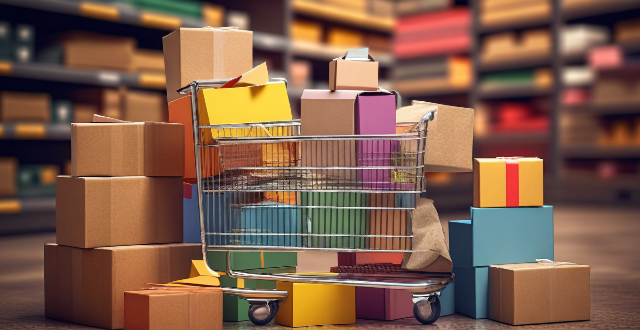
What are the best practices for pricing items in a second-hand market ?
When selling items in a second-hand market, it's essential to follow best practices for pricing to maximize profits and ensure a smooth transaction. Key tips include researching market value, considering the item's condition, setting a fair price, being open to negotiations, and updating the listing regularly. By following these guidelines, sellers can attract more potential buyers and increase their chances of making a successful sale.

What is the ideal way to pack fragile items for a journey ?
Packing fragile items for a journey can be a daunting task, but with the right approach, you can ensure that your precious belongings arrive at their destination safely. Here are some tips on how to pack fragile items ideally: 1. Use proper packing materials such as bubble wrap, packing paper, foam peanuts, and anti-static polyethylene bags. 2. Wrap each item individually to reduce the risk of damage during transit. 3. Use boxes of appropriate size to accommodate the item without too much extra space or pressure. 4. Label boxes appropriately with clear, legible writing to indicate that the box contains fragile items and which direction is up.

What are some tips for successfully haggling over the price of a second-hand item ?
Successfully haggling over the price of a second-hand item requires research, politeness, starting low but reasonable, highlighting flaws, offering cash payment, being willing to walk away, using silence to your advantage, and considering bundle deals.
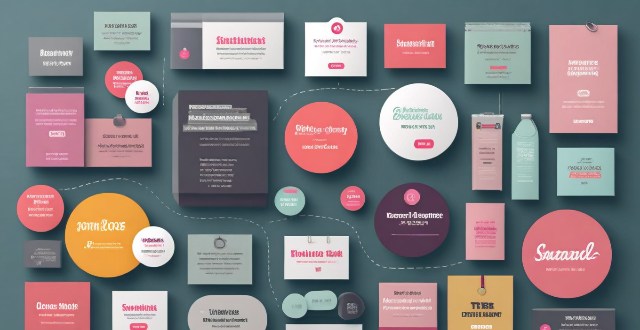
Are there any shopping apps that specialize in selling handmade or artisanal goods ?
There are several shopping apps that specialize in selling handmade or artisanal goods, providing a platform for artisans and craftsmen to showcase their unique creations and reach a wider audience. Some of the popular shopping apps that focus on handmade or artisanal goods include Etsy, ArtFire, Aftcra, and Zibbet. These apps offer various features such as handpicked collections, personalized recommendations, studio membership, promotional opportunities, customizable shopfronts, mobile accessibility, American-made guarantee, community engagement, quality assurance, seller support, free listings, live chat, social integration, and mobile responsiveness.

How do I ensure that my clearance sale doesn't lead to overstocking issues later on ?
Clearance sales are a powerful tool for boosting short-term revenue and managing old inventory. However, they need to be managed carefully to avoid future overstocking issues. This comprehensive guide provides strategies such as planning ahead, limiting promotional periods, segmenting inventory, dynamic pricing, leveraging data analytics, cross-selling and upselling, post-sale analysis, and customer retention strategies. By implementing these tactics, businesses can ensure their clearance sales clear out old inventory efficiently while laying the groundwork for sustainable inventory management moving forward.

How do I manage inventory during a clearance sale ?
Managing inventory during a clearance sale requires careful planning and execution. Here are some tips to help you manage your inventory effectively: 1. Analyze your current inventory levels to identify which products need to be sold off and how much stock you have of each item. 2. Set clear objectives for your clearance sale, including how much revenue you want to generate and what percentage of your inventory you want to sell off. 3. Identify slow-moving products that have been sitting in your warehouse for an extended period and offer them at a discounted rate. 4. Determine the discount levels for each product based on its demand and profit margin. 5. Promote your clearance sale through various channels such as social media, email marketing, and in-store signage. 6. Track sales and inventory levels throughout the clearance sale to identify which products are selling well and which ones are not. 7. Restock popular products that sell out quickly during the clearance sale. 8. Don't forget about returns, and make sure you have a clear return policy in place and train your staff to handle returns efficiently.

How do I know if a discount is really worth it during the discount season ?
During discount season, it's essential to critically evaluate sales to ensure you're getting a good deal. To determine if a discount is truly worth it, consider the original price by checking historical prices and comparing across retailers. Assess your need for the item by making a wishlist and considering long-term usage. Evaluate quality through customer reviews and brand reputation. Calculate savings by looking at both percentage and dollar amount off, and compare the post-discount price to your budget. Check return policies for any restrictions or fees. Avoid impulse buying by sleeping on it and setting a budget. This approach helps in making informed decisions that align with your needs and budget without compromising on quality.

What are some tips for successfully haggling when buying second-hand items ?
Haggling is an art form, especially when it comes to buying second-hand items. It requires a combination of research, negotiation skills, and a bit of luck. Here are some tips to help you successfully haggle and get the best deal possible: 1. **Do Your Research**: Determine market value, understand the seller's motivation, and check for flaws or issues. 2. **Develop Negotiation Skills**: Start low but fair, be polite and respectful, use silence to your advantage, and be willing to walk away. 3. **Leverage Your Position**: Offer cash upfront, bundle items, and provide a counteroffer. 4. **Finalize the Deal**: Get it in writing, inspect before paying, and ask about returns. By following these tips, you can increase your chances of successfully haggling when buying second-hand items. Remember, the key is to do your homework, remain polite yet assertive, and be ready to walk away if necessary. Happy haggling!

How do I know if a团购优惠 (tuan gou youhui) is a good deal ?
To determine if a group purchase deal is worthwhile, consider factors such as the discount offered compared to retail prices, the reputation of the seller, product quality, terms and conditions of the deal including shipping costs and validity period, convenience in redeeming the offer, and any additional or hidden costs. By thoroughly evaluating these aspects, you can make an informed decision on whether the Tuan Gou Youhui is genuinely valuable or not.

How do I organize my closet quickly and efficiently ?
Organizing a closet can be a daunting task, but with the right approach, it can be done quickly and efficiently. Here are some tips on how to organize your closet: ## Step 1: Remove Everything from the Closet The first step in organizing your closet is to remove everything from it. This will give you a blank slate to work with and make it easier to see what you have. ### Tip: - Take everything out of the closet and sort it into piles based on category (e.g. clothes, shoes, accessories). ## Step 2: Declutter Your Closet Once you have everything out of the closet, it's time to declutter. Go through each item and decide whether to keep, donate, or throw away. ### Tips: - Be honest with yourself about what you actually wear and need. - If you haven't worn something in over a year, consider donating or selling it. - Don't forget to check expiration dates on beauty products and medications. ## Step 3: Categorize Your Clothes Now that you've decluttered, it's time to categorize your clothes. Group them by type (e.g. pants, shirts, dresses) and then by color within each category. ### Tips: - Use matching hangers for a cohesive look. - Consider using space-saving hangers for bulky items like coats and sweaters. - Fold items that tend to slip off hangers, such as sweaters and soft fabrics. ## Step 4: Maximize Space with Shelves and Drawers If your closet has shelves or drawers, use them to maximize space. Store items that don't need to be hung up, such as shoes, accessories, and folded clothes. ### Tips: - Use clear storage containers or shoeboxes to keep smaller items organized. - Install additional shelving if needed. - Consider investing in drawer dividers for smaller items like socks and underwear. ## Step 5: Use Hooks and Hanging Organizers Don't forget about the back of the door! Use hooks and hanging organizers to store items like belts, scarves, and purses. ### Tips: - Install hooks at different heights to accommodate various sizes of items. - Use hanging organizers specifically designed for purses or scarves. - Consider adding a second hanging rod for shorter items like tank tops and skirts. ## Step 6: Maintain Your Organization Once your closet is organized, it's important to maintain it. Make sure everyone in the household knows where things go and encourage them to put things back properly after use. ### Tips: - Schedule regular decluttering sessions every few months. - Rotate seasonal clothing so that only current season items are visible. - Consider investing in matching storage containers for a consistent look.

Are duty-free goods genuine or are they often counterfeit ?
Duty-free goods are often seen as a way to save money on luxury items, but the question of their authenticity arises for many travelers. Most duty-free shops operate under strict government regulations and have reputational incentives to sell genuine products. However, instances of counterfeit goods have been reported, often due to supply chain issues or fraudulent practices. To ensure you are purchasing genuine items, it's important to research before traveling, purchase from reputable sources, inspect the product carefully, and beware of unusually low prices. By exercising caution and remaining vigilant, you can enjoy the benefits of duty-free shopping with peace of mind.

Can I sell my old electronics instead of throwing them away ?
Selling old electronics is beneficial for both the seller and the environment. It helps in earning extra cash, reducing electronic waste, promoting sustainability, and helping others who cannot afford new devices. The process involves determining the value of the device, cleaning and testing it, choosing a selling platform, creating a listing, communicating with buyers, and finalizing the sale. This not only declutter your space but also contribute to environmental conservation.

How can I properly dispose of my old electronics ?
The text provides a comprehensive guide on the proper disposal of old electronics, emphasizing the environmental impact and potential hazards associated with e-waste. It outlines steps to identify, evaluate, donate, resale, or recycle electronic devices through city programs, manufacturer trade-in schemes, specialized recyclers, and DIY disassembly. The guide also stresses the importance of safety precautions during handling and concludes by highlighting the responsibility in managing e-waste responsibly for environmental and personal safety reasons.
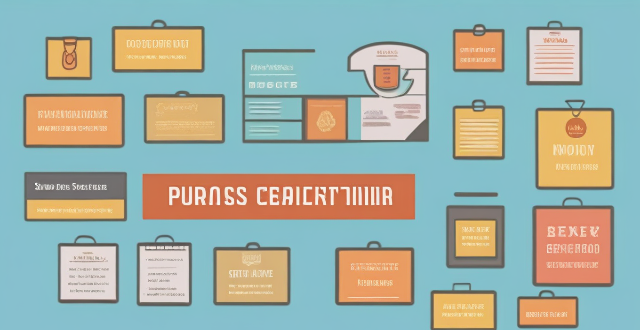
What are some essential factors to consider when buying secondhand items ?
When purchasing secondhand items, several essential factors should be considered to ensure the best value for money. These include the condition of the item, its price, the reputation of the seller, authenticity, age and lifespan, and safety and legality. By considering these factors, buyers can make informed decisions and avoid potential pitfalls.

How do I sell my cryptocurrency ?
This guide provides a step-by-step process for selling cryptocurrency, emphasizing the importance of security, fees, user interface, and supported currencies. It outlines steps such as choosing a reputable exchange or trading platform, creating an account, verifying identity, linking a payment method, transferring crypto to the exchange, placing a sell order, confirming the trade, and securing assets. The text also includes tips on tax implications and consulting a financial advisor.

How do I know if an online shopping discount is actually a good deal ?
To determine if an online shopping discount is actually a good deal, consider the following: 1. **Check the Original Price**: Ensure the discount isn't based on an inflated original price by comparing it with other websites or checking the price history. 2. **Look for Reviews and Ratings**: High ratings and positive reviews can indicate that the discounted price is indeed a good deal. 3. **Compare with Similar Products**: Compare the discounted item with similar products on the market to gauge if the price is genuinely lower than usual. 4. **Consider the Return Policy**: Be aware of any strict return policies for discounted items which could potentially increase costs if you need to return or exchange. 5. **Use Price Tracking Tools**: Utilize websites or browser extensions that track prices over time, alerting you when items reach a certain price point. By employing these strategies, you can make informed decisions about online shopping discounts and avoid being misled by false advertising or artificially high prices.
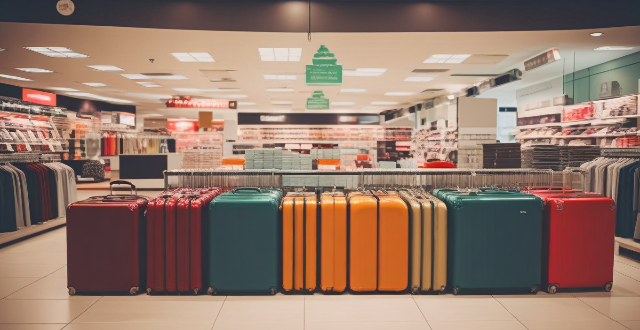
What should I consider before buying luxury items in a duty-free store ?
When considering purchasing luxury items in a duty-free store, one should keep in mind their budget, the authenticity of the item, price comparison, return policy, warranty coverage, potential tax refunds for international travelers, and customs regulations.